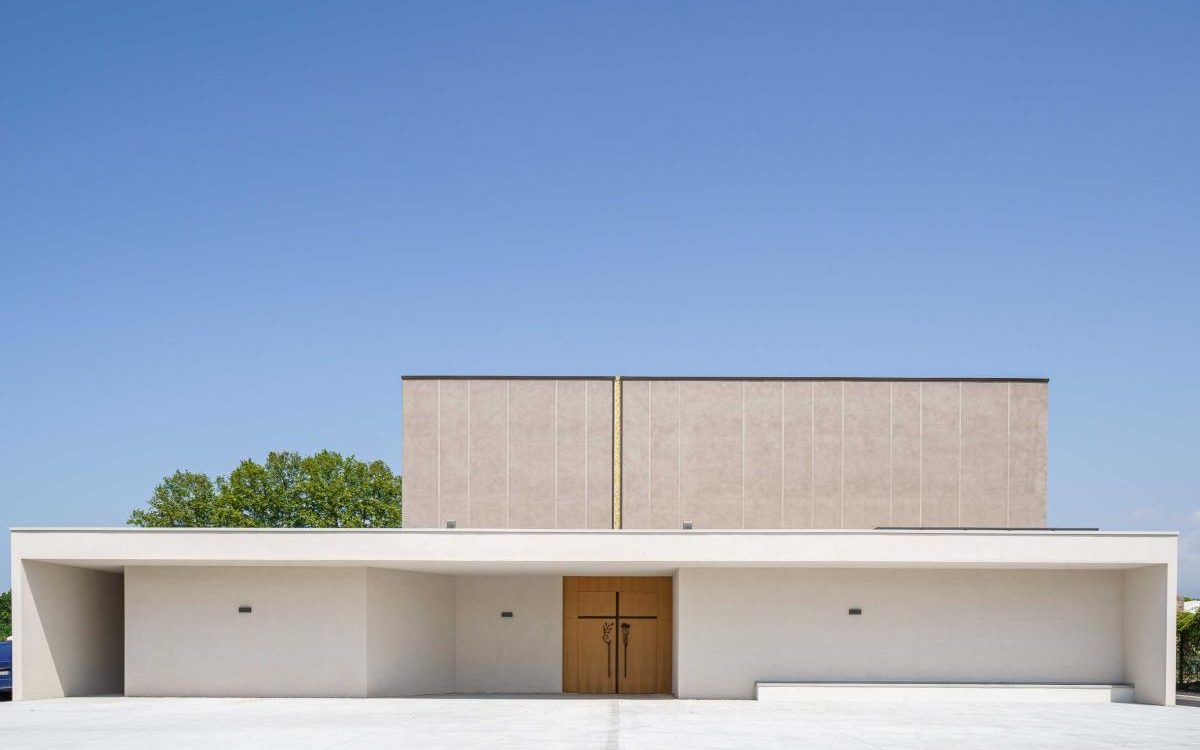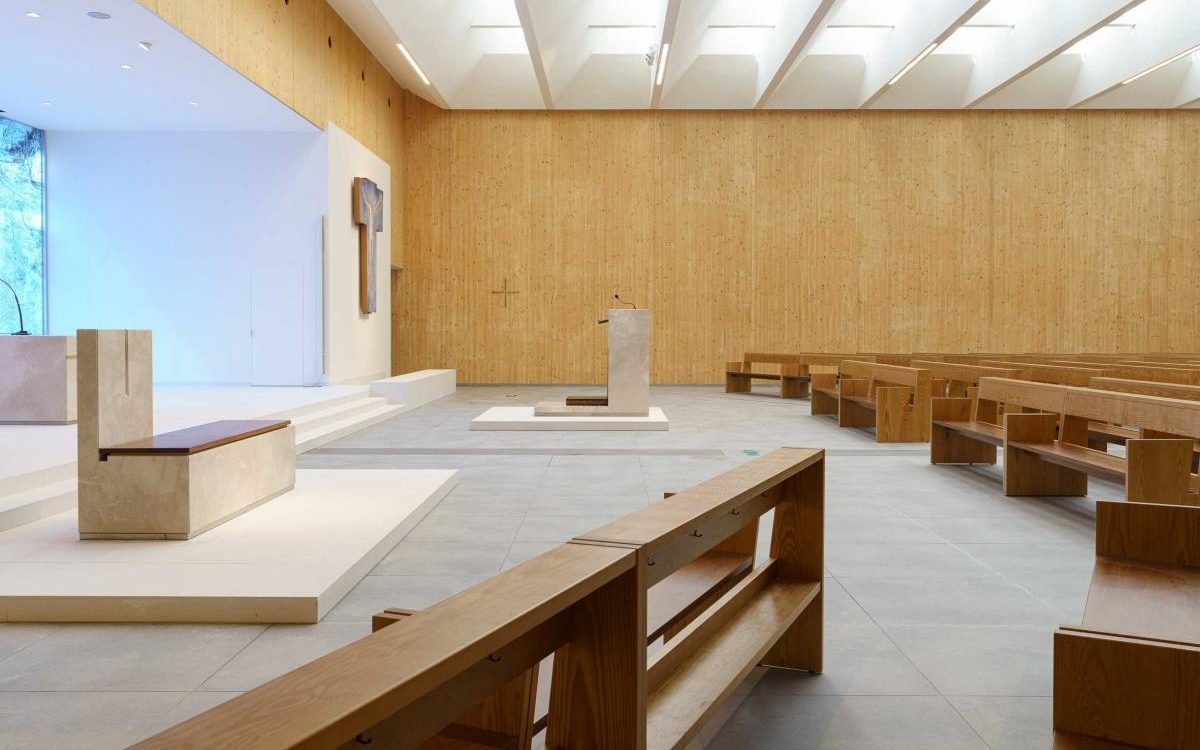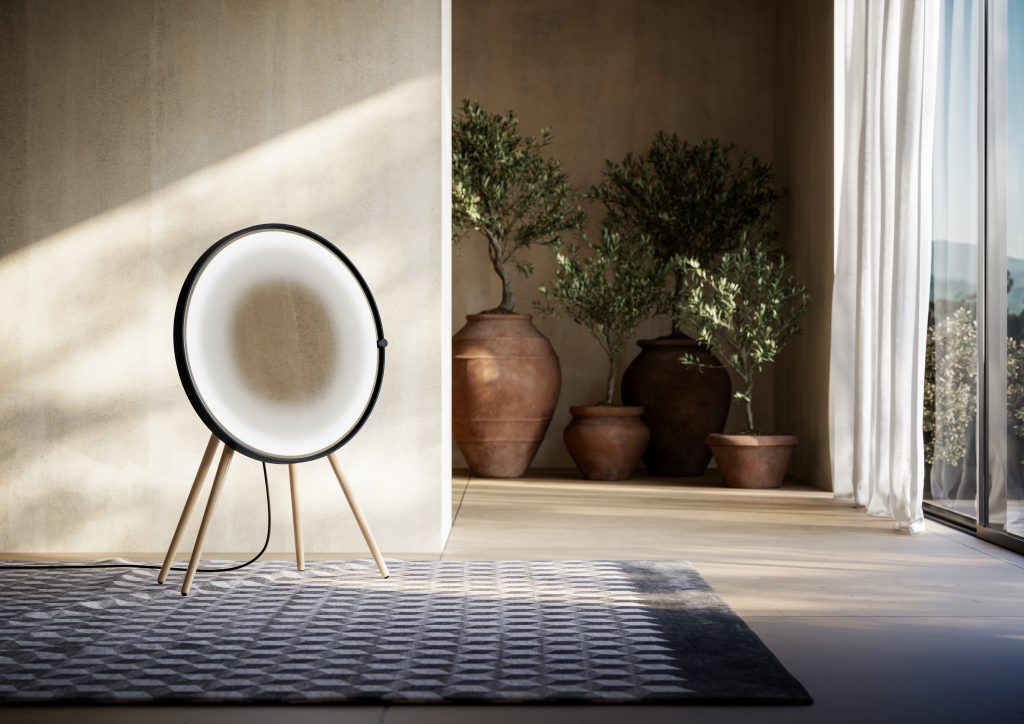
Sacred and religious buildings, places of worship, prayer and meditation use Casalgrande Padana porcelain stoneware
Sacred and religious buildings, places of worship, prayer and meditation: magnificent constructions that have survived through the centuries so we might admire them in all their splendour. Imposing, mysterious architectural creations that speak to us through the language of symbols, numbers and metaphors that permeates religious architecture and geometries. These sacred buildings have been a frequent subject of in-depth study.
This secret relationship between numbers, and the harmony governing the creation of shapes is expressed in all its virtuoso splendour through the use of Euclidean shapes. Circles, triangles and squares, golden ratios, proportions in perfect harmony shape exquisite architectural creations in which the present engages continually with both past and future.
Sacred architecture is perhaps one of the most complex forms of art, requiring an ability to engage with the purity of those profoundly symbolic forms and volumes and the repetitive patterns they form. These are shapes able to commune with the very essence of humankind.
Bambreg Thomas – New Apostolic Church of Kornwestheim (Germany)
Designed by the architect Thomas Bamberg, the New Apostolic Church of Kornwestheim is built on the base of the original construction, between the railway station, a large industrial area and the residential area behind it. The project is composed of simple shapes. Solemn and silent, a major focus of this austere building is the illumination, both day and night. With this in mind, glass skylights have been positioned at either side of the altar. The coloured inserts added to the windows on the south side shine in from the outside, and if the church is lit up in the evening, from the inside out. Located on the west side of the building are the cloakroom, the sacristy and the multi-purpose rooms, while the foyer links this multi-functional area to the church itself.
From this entrance area, where the foundation stone of the building can be seen below a glass panel on the floor, the geometric layout of the floor marks off the common areas and leads into the place of worship. At the back of the church is a raised altar. The plain colour of the tiles selected for the flooring throughout the building – the Mineral Chrom Grey collection, in the 30×60 cm size – is consistent with the style of the whole construction. Together with the linear shapes, the pure white of the walls and ceiling and the warm wood of the furnishings, it creates a restrained, balanced atmosphere conducive to reflection.
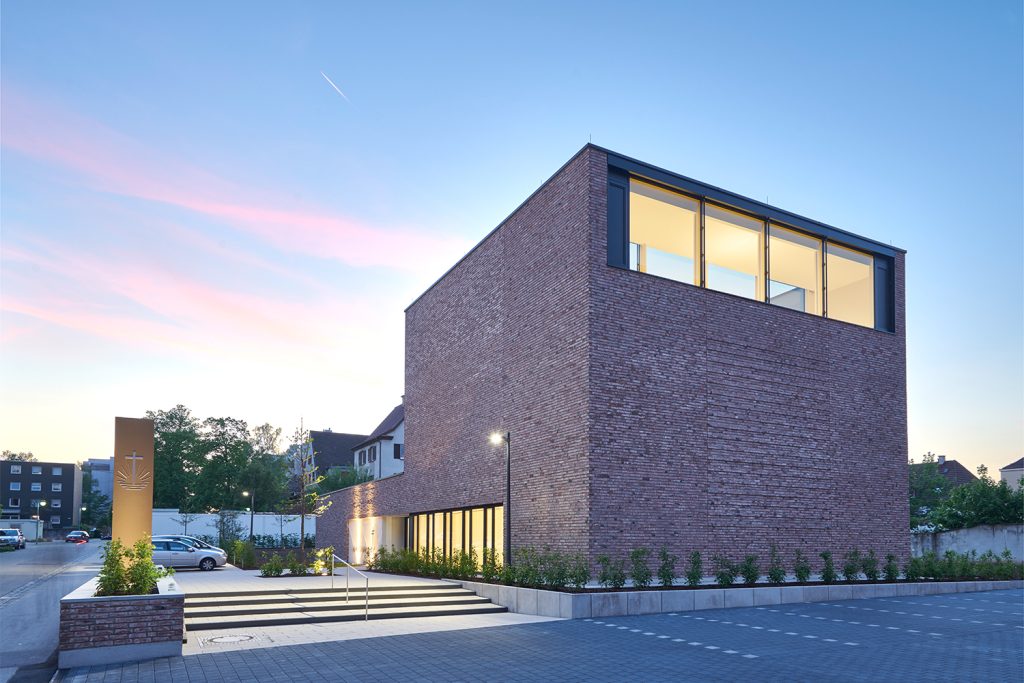

Corvino and Multari – Madonna delle Grazie Parish Complex, Dresano – Lodi (Italy)
A silent language, a symbolic reading representative of the universal harmony expressed through the volumetric definition of space and the composition of the shapes. In the design project for the Madonna delle Grazie Parish Complex of the Diocese of Lodi in Dresano, entrusted to the architects Vincenzo Corvino and Giovanni Multari, the central feature of the entire construction is the perfection of the geometric shapes, an unchanging aspect that conceals complex meanings.
The architectural design of the parish complex derives from a composition of two basic geometric shapes. The circle – the purest of elements, symbolises the spirit and the immortal nature of the soul, on which this example of sacral architecture is built, while the rectangle of the base symbolises definition, delineation and the joining of the four compass points, featuring a central cloister around which the other parish buildings are arranged. The base of the religious construction, covering the entire lot from east to west, is formed by a single level, featuring a woven structure in reinforced concrete that allows the necessary amount of light to filter through to the spaces inside.
The church is composed of two concentric cylinders: an inner, lower element where mass is held, with the pews converging towards the chancel, and a taller, outer element that allows natural light into the church and forms an ambulatory that runs right around the place of worship and forms the perimeter that closes off the construction. This latter space hosts the chancel, the tabernacle, the baptismal font and the confessional. The position of the chancel, at the end of the sequence formed by the parvis-door-chamber-apse, adds another fundamental symbolic element to the central focus of the circular ground plan: the axial symmetry of the space, culminating in the large statue of the Crucifixion, sculpted. The rigorous, sacred nature of the place is also expressed in the choice of the flooring: the 60×120 cm and 30×60 cm porcelain stoneware tiles from the Marte collection, in the colour Thassos and with a natural finish.
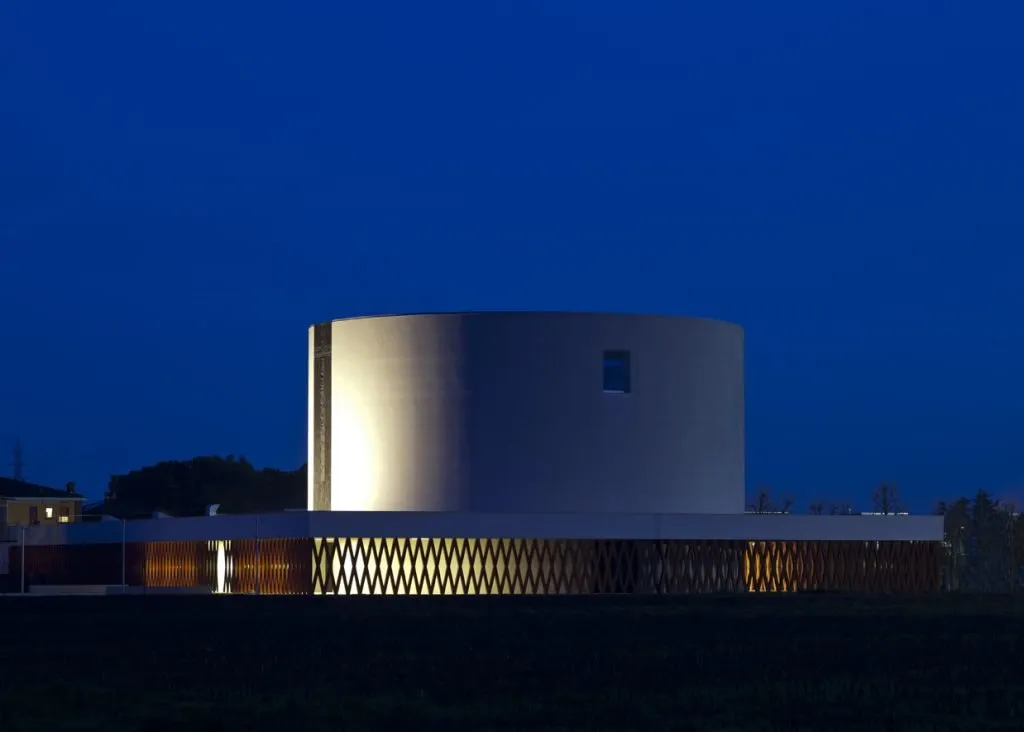
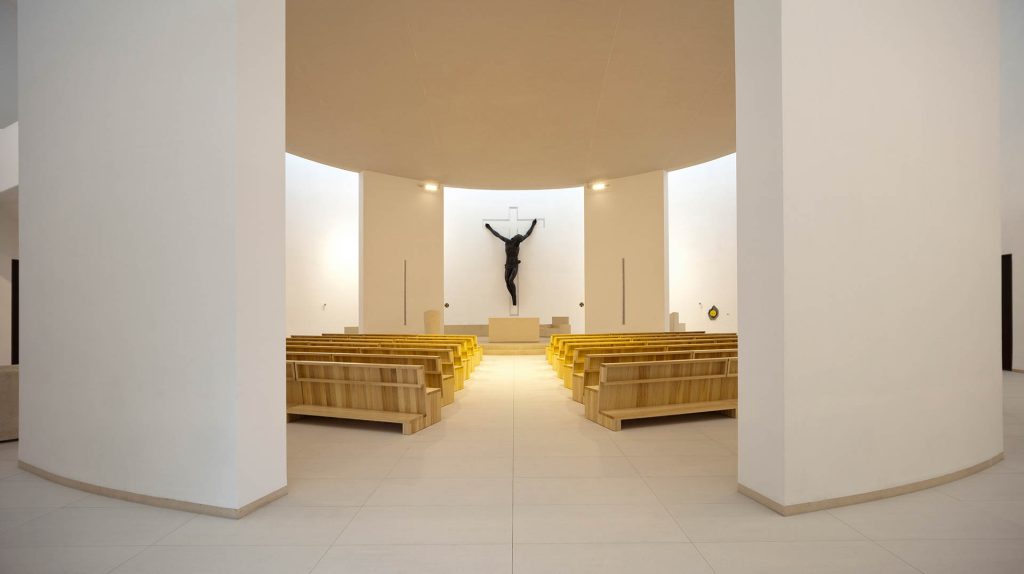
Studio TAMassociati – New parish complex Resurrezione di nostro Signore, Varignano – Viareggio (Italy)
The complex was built to replace a previous construction that was no longer adequate for the necessary parish activities and religious services. In 2019, TAMassociati – Simone Sfriso completed the sacral architecture project in the Varignano district in Viareggio. The main purpose of the renovation work was to bring a more contemporary approach to the values transmitted by the gospel message, as well as focusing closely on environmental and social sustainability.
This building was designed with the community in mind, so the construction project sought to preserve its memories, focusing on a simple approach to religious services and spiritual guidance, as well as the complex task of blending the sacred architecture smoothly with both the urban setting and the surrounding landscape. The project was designed to signal renewal, embodying the idea of opening up and facilitating participation for local citizens, by improving resources and making the parish more liveable. It marks the start of a process of existential regeneration that seeks to partner faith with a commitment to the community. The new parish complex is built on an area of 4,123 square metres, with a usable surface of 1,700 square metres. It contains spaces for both worship and social activities. In addition to the church itself, with a capacity of 400 worshippers, the complex comprises the presbytery and rooms where catechism is taught, as well as green areas, study and play areas and community facilities at the disposal of local associations.
The last of the issues the project focused on is sustainability. The construction boasts impressive performance with regard to both energy saving and easy maintenance. The building is made from X-lam wood panels equipped with technology powered by a 27 Kw photovoltaic field, hidden from sight on the roof. This system enables primary air exchange and treatment, as well as the dynamic control of both temperature and humidity levels, thus guaranteeing optimal environmental comfort in the church and helping to preserve the building envelope over the years. This eco-sustainable approach and the focus on a simple, no-frills style prompted the designers to opt for the use of porcelain stoneware floor tiles from the Pietre di Sardegna collection, in the colours Caprera (90×90 cm size in the 20 mm thickness, and 30×60 cm and 60×120 cm sizes), Cala Luna (60×120 cm) and Punta Molara (30×60 cm), adding up to a total of 1,725 square metres.
